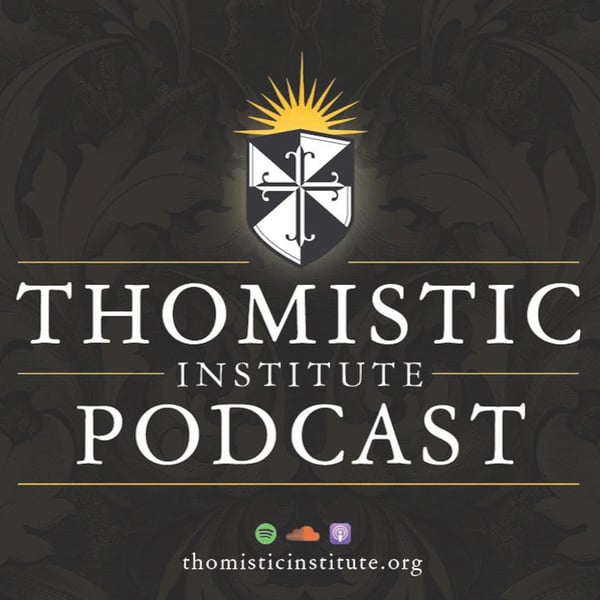The Image and the Idol: A Theological Reflection on AI Bias | Prof. Jordan Wales
The Thomistic Institute
The Thomistic Institute
4.8 • 729 Ratings
🗓️ 23 November 2022
⏱️ 64 minutes
🧾️ Download transcript
Summary
This talk was given on October 13, 2022 at the University of Texas at Austin. For more information please visit thomisticinstitute.org. About the speaker: Jordan Wales is an Associate Professor and the John and Helen Kuczmarski Chair in Theology at Hillsdale College. His scholarship focuses on early Christian understandings of seeing God as well as contemporary theological and philosophical questions relating to Artificial Intelligence. He is published in Augustinian Studies and AI & Society, among other journals; he is an advisor to the Holy See’s new Center for Digital Culture, under the Pontifical Council for Culture; and he is an affiliated scholar with the Centre for Humanity and the Common Good at Regent College, University of British Columbia. He received his M.T.S. and Ph.D. in Theology from the University of Notre Dame after studying under a British Marshall Scholarship in the U.K., where he received a Diploma in Theology from Oxford and a M.Sc. in Cognitive Science and Natural Language from the University of Edinburgh. He is a recipient of a Graduate Research Fellowship from the National Science Foundation.
Transcript
Click on a timestamp to play from that location
| 0:00.0 | This talk is brought to you by the Tamistic Institute. |
| 0:05.1 | For more talks like this, visit us at tamistic institute.org. |
| 0:13.3 | The title of my talk is The Image and the Idol, a theological reflection on AI bias. |
| 0:19.8 | Bias is a rightly unpopular phenomenon in our day, but in one sense, |
| 0:24.9 | we are all and must be biased. When we deliberate about an action, when we wish to select a course |
| 0:32.7 | other than that suggested by impulse, instinct, and habit, we must capture and interpret reality. |
| 0:40.1 | We must schematize it to make sense of it and direct our action within and toward it. |
| 0:47.0 | Even before such deliberation, interpretive reductions are also part of our biological |
| 0:52.0 | makeup, e.g., in our selective sensitivities to the impinging |
| 0:56.5 | environment, in how our nervous system makes stimuli to feel, and in our uniquely rational |
| 1:03.3 | tendency to wonder about and to conceptualize the things that we experience. Whether inborn, habitual, or carefully considered, our reductions can |
| 1:15.0 | yield insights. We are revolted by the smell of rot. We tell children that some berries are edible |
| 1:21.5 | and others are only for birds. We discuss race as both real and socially constructed, and we talk about degrees of realism |
| 1:30.3 | in our accounts of how we know the world. |
| 1:33.3 | On the other hand, our perceptual and conceptual specifications are undesirable biases |
| 1:41.3 | when they are not so much selective of the scope of human life and action |
| 1:46.8 | as they are distorted within it. |
| 1:49.7 | That I cannot, but bees can, see ultraviolet reflecting markings on flowers, or that |
| 1:56.3 | fire pains me. |
| 1:58.5 | These are examples of selectivity. A three-year-old's greater comfort with own race faces, |
| 2:05.0 | radiating from an innocuous preference for the primary caregiver's face, or a child's expectation |
| 2:11.2 | that a secretary will be female, are bounds, however, that ought to be expanded by rearing, |
... |
Please login to see the full transcript.
Disclaimer: The podcast and artwork embedded on this page are from The Thomistic Institute, and are the property of its owner and not affiliated with or endorsed by Tapesearch.
Generated transcripts are the property of The Thomistic Institute and are distributed freely under the Fair Use doctrine. Transcripts generated by Tapesearch are not guaranteed to be accurate.
Copyright © Tapesearch 2025.

